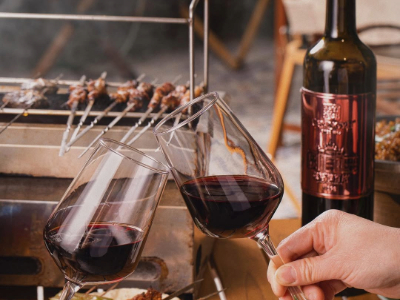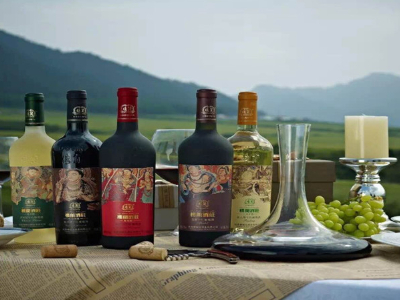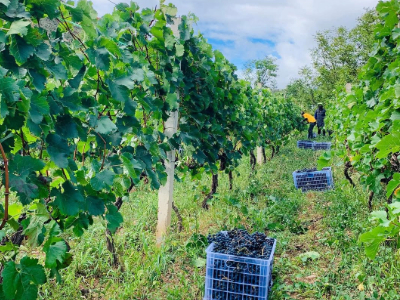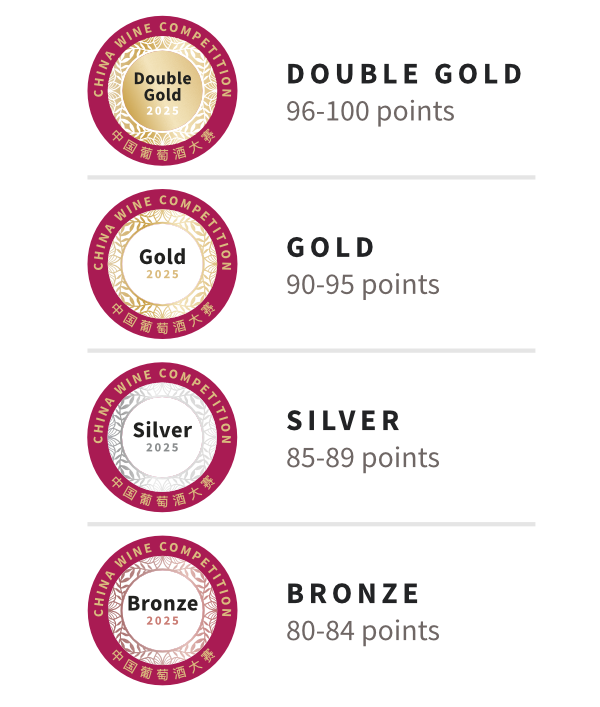November 10 , 2026, Hong Kong

Discover the unique flavors of China's top wine regions and explore perfect wine pairings with traditional Chinese dishes for a true gastronomic experience
China's wine regions are rapidly gaining international recognition, not just for their exceptional wines but also for how perfectly they complement the country's diverse and flavorful cuisine. From the cool, continental climate of Ningxia to the sun-drenched vineyards of Xinjiang, each region offers wines that are as distinct as the dishes they pair with. Whether it's a rich Cabernet Sauvignon that enhances the savory depth of Peking duck or a crisp Riesling that cuts through the spice of Sichuan cuisine, these wines are crafted to elevate the eating experience. The China Wine Competition explores the unique terroirs of China's top wine regions and highlights the ideal food pairings that showcase their wines at their best.
Ningxia
Ningxia, sometimes known as China's "Bordeaux," is China's growing wine star, situated in the Helan Mountains. Its continental climate and mineral-rich soils yield outstanding Cabernet Sauvignon with deep dark berry flavors and structured tannins, as well as delicate Chardonnays with citrus and mineral overtones. These wines go well with dishes such as roasted Peking duck, where the acidity cuts through the richness, and seafood stir-fries, where the Chardonnay's sharpness complements delicate tastes. Ningxia is a must-know destination for wine connoisseurs because it combines terroir-driven winemaking with gastronomic harmony.

Image: Helan Qingxue Vineyard
Shandong
Shandong, China's largest wine-producing region, is renowned for its Cabernet Gernischt, Cabernet Sauvignon, Riesling, and Chardonnay. Shandong, which is anchored by the Yantai Peninsula and is sometimes compared to Napa Valley, has a maritime environment that allows for various grape growth. Iconic wineries such as Changyu Pioneer Wine Company have elevated their global renown. Shandong wines, with their powerful red blends and crisp whites, pair nicely with rich seafood meals and grilled meats, perfectly balancing flavors. Its thriving wine tourism industry reflects the region's desire to become a center for superior winemaking and gastronomic experiences.

Image: Changyu Wine
Gansu
Gansu, a wine region with a roughly 2,400-year history, provides a unique opportunity to mix its wines with traditional Chinese cuisine. Gansu's winemaking legacy dates back to the historic Silk Road, which connects the Tibetan and Loess plateaus. The three major subregions—Wuwei, Zhangye, and Jiayuguan—have a cool, continental climate and mineral-rich, sandy soils. Pinot Noir, Cabernet Sauvignon, Merlot, and Riesling do well here, with late-ripening varietals performing best. These wines, particularly the deep reds and crisp whites, go well with robust Chinese cuisine like Peking duck or delicious stir-fries, enhancing both the depth and spice of the food.
Also read: China's Wine Demand: Trends And Opportunities For International Wineries In 2025
Xinjiang
Xinjiang wines, with their rich history and distinct flavors, are intriguing pairings for Chinese cuisine. The region's sweet wines, made from grapes cultivated in arid, sunny conditions, pair well with spicy foods like Sichuan hotpot because they balance heat with natural sweetness. Meanwhile, dry reds like Cabernet Sauvignon go well with robust lamb skewers, a tribute to Xinjiang's culinary legacy. For lighter dishes like stir-fried veggies or steamed dumplings, the subtle acidity of Xinjiang's white wines, especially Chardonnay, provides a pleasant contrast. These varied wines reflect Xinjiang's diverse terroir and complement the robust flavors of Chinese cuisine.

Image: Loulan Winery
Yunnan
Yunnan's high-altitude vineyards and mineral-rich soils produce wines with unusual flavors, ideal for complementing with the region's robust and aromatic cuisine. Red wines from Ao Yun or Xiaoling Estate, with their deep depth and delicate tannins, enhance the spice and umami of Yunnan hot pot or grilled lamb skewers. Meanwhile, Yunnan Red Wine Company's selections, crafted from indigenous grape types, go well with lighter fare like stir-fried veggies or mushroom dishes. Yunnan wines' acidity and taste balance complement the various layers of Yunnanese food, making them an excellent choice for authentic pairings.

Image: Xiaoling Estate
Sichuan
Sichuan's Ganzi Prefecture, with its high-altitude vineyards buried in the mountains, provides unique wine combination prospects with Chinese cuisine. The region's unique terroir, with varying altitudes and an arid river valley environment, favors both early and late-maturing grape varietals, resulting in wines with nuanced characteristics. Ganzi's wines, influenced by Tibetan, Qiang, and Yi cultures, complement Sichuan cuisine, which is recognized for its robust flavors. The wines' diverse qualities, ranging from deep reds to crisp whites, compliment the spice and aromatic complexity of Sichuan cuisine, resulting in a dynamic and savory matching experience.
Also read: Top Wine People Of China To Watch Out For
Hebei
Hebei Province, China's second-largest wine region, produces a wide variety of wines that combine perfectly with northern Chinese cuisine. Shacheng's crisp dry whites, such as Chardonnay, enrich shrimp dumplings and steamed dishes, while Changli's robust reds, like Cabernet Sauvignon and Cabernet Gernischt, enhance the rich flavors of Peking duck and roasted meats. With a continental climate and diverse terroirs ranging from Shacheng's cool, steep heights to Changli's seaside influence, Hebei wines are complex and balanced. Their proximity to Beijing makes Hebei an excellent choice for matching wines with the region's typical meals.

Image: Canaan Winery
Shanxi
Shanxi Province, noted for its developing wine sector, offers wines that go well with Chinese cuisine. Grace Vineyard, known for its Cabernet Sauvignon, is a standout in the region. The area's thick sandy loam soil, high altitude, and abundant sunshine produce balanced wines that pair well with rich foods like braised meats and roast duck. The continental environment, with hot summers and chilly winters, lends richness to the wines, making them an excellent pairing with robust, delicious dishes. As Shanxi's wine industry expands, its wines are becoming increasingly popular for pairing with traditional Chinese cuisine.

Image: Grace Vineyard
Inner Mongolia
Inner Mongolia is noted for its high-altitude vineyards and continental climate, which produce notable wines such as Chardonnay, Cabernet Sauvignon, and Vidal blanc. Chardonnay's bright citrus and green apple flavors complement seafood meals like stir-fried shrimp or steamed fish. Cabernet Sauvignon, rich and full-bodied with dark fruit and spice, pairs well with heavy meats such as roast duck or braised beef. Vidal Blanc, which is aromatic and sweet, pairs beautifully with spicy or sweet and sour meals such as Kung Pao chicken. Local wineries such as Chateau Hansen, Sun Spirit, and Xi Xia King emphasize these pairings, demonstrating the region's potential for Chinese wine and cuisine harmony.

Image: Chateau Hansen
Tianjin
Tianjin, a tiny but major wine region on China's east coast, provides unique chances for wine connoisseurs due to its proximity to Beijing. Despite its coastal, low-lying topography and maritime climate, which can pose problems with humidity and fungal infections, the region produces wines such as Cabernet Sauvignon, Muscat Hamburg, and Chardonnay. These wines go nicely with Tianjin's famous local food. Chardonnay's crisp, citrus notes compliment the region's seafood meals, while Cabernet Sauvignon's fruity and spicy flavors mix well with lamb skewers or rich, savory braised meats. Muscat Hamburg, with its fragrant sweetness, pairs well with light desserts and fruity appetizers. Dynasty Wines, founded in Tianjin in 1980, is still a major player in the region, blending local and imported grapes to create wines that reflect the area's distinct terroir.
While China's wine business grows and gains global prominence, pairing its wines with traditional Chinese cuisine is an interesting adventure for wine and food lovers. With its own temperature, terroir, and winemaking traditions, each region offers a variety of flavors to suit Chinese cuisine. From the bold reds of Ningxia to the fragrant whites of Inner Mongolia, these wines represent their areas' rich traditions and provide new ways to match food and wine. China's wine regions are positioned to become world culinary leaders with such vibrant and harmonious combinations.
Header image sourced from Jimmy’s Kitchen, Hong Kong
Related Links
The 12 Chinese Wine Regions You Need To Know
Key Trends Shaping the Alcohol Market in China and Hong Kong
The 2025 China Competitions results are now live. View 2025 winners.
Key Dates
Super Early Bird Deadline: May 20, 2026
Early Bird Deadline: July 31, 2026
Regular Deadline: October 14, 2026
Warehouse Deadline: October 22, 2026
Judging Date: November 10, 2026
Winners Announcement: November 24, 2026



